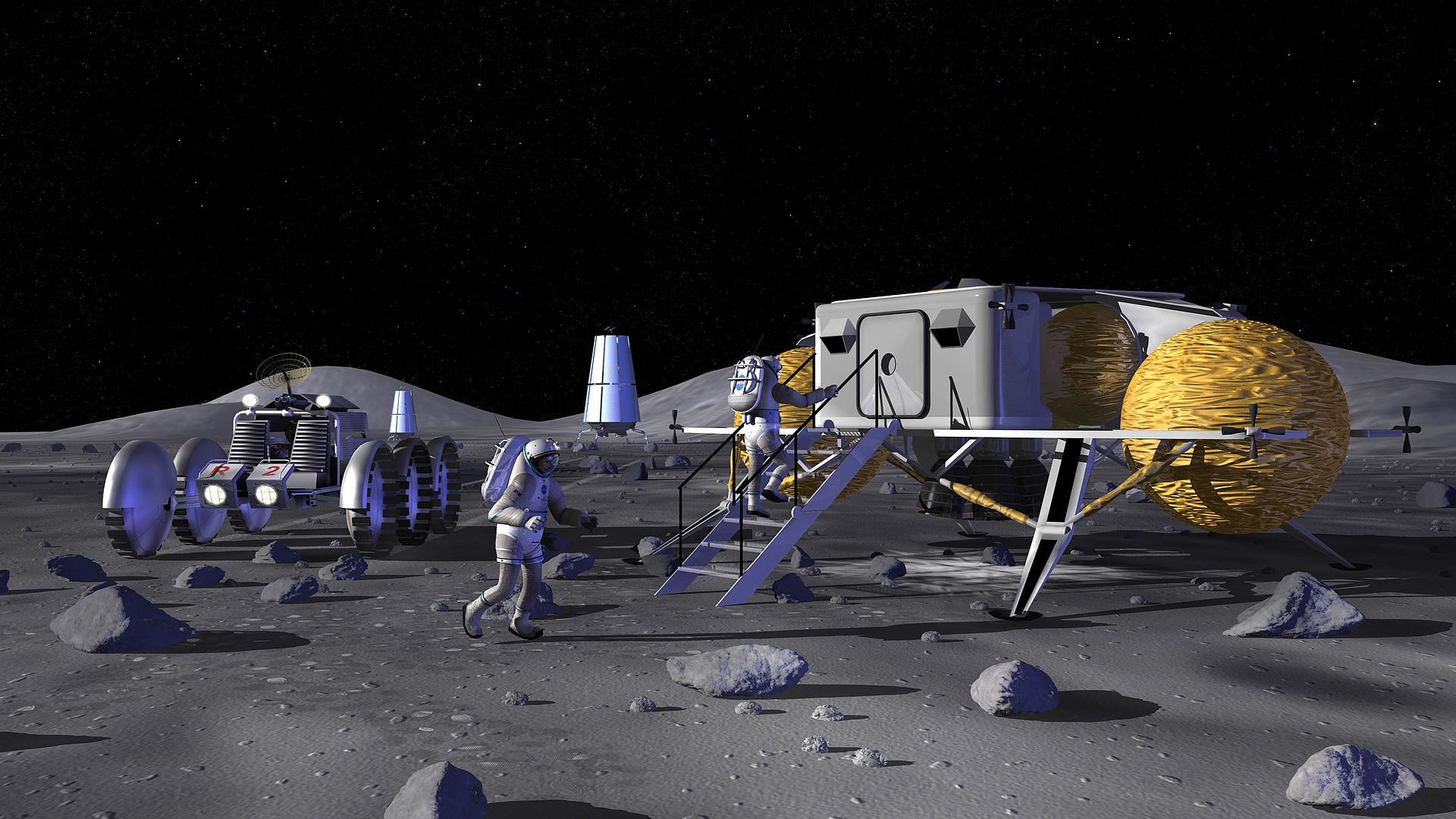I was thrilled when the U.S. landed a man on the Moon in 1969 and have been very disappointed that it is decades later and we have not sent any humans to the Moon in quite awhile. I could never understand how we could have done it the first time from scratch and with primitive equipment only to be told that it would take decades and break the bank to send humans up there again. Lately there has been a lot of talk about sending people to Mars, a much tougher mission. And a debate has been going on about whether we should go back to the Moon first before we go on to Mars. A new report funded by NASA shows that it won't be anywhere near as expensive as has been estimated to return astronauts to the Moon. The report also supports the idea that we should go back to the Moon first.
The NexGen Space study was produced by the National Space Society and the Space Frontiers Foundation with NASA funding. The report states that if NASA partners with private companies, we can return humans to the Moon for about ten billion dollars instead of the one hundred billion dollars that had been the previous estimate for a manned mission to the Moon. In addition to reducing the cost of travel to the Moon, the report says that utilizing the hydrogen and water on the Moon, the cost of travel beyond the Moon to destinations such as Mars could also be drastically reduced.
The reason for the study was to assess whether or not public-private partnerships and other arrangements could yield a "low-cost and low-risk" method to getting people to the Moon and lay the groundwork for future missions beyond the Moon via what was called Evolvable Lunar Architecture (ELA).
The study cites NASA's investments in successful private spaceflight with its Commercial Orbital Transportation Services (COTS) and its Commercial Resupply Services (CRS) programs. By 2017, NASA expects to have two manned spacecraft, the SpaceX Dragon capsule and the Boeing CST-100 ready to test launch under its Commercial Crew Program (CCP). SpaceX is also working on the Falcon Heavy heavy launch vehicle and the United Space Alliance is working on the Vulcan heavy launch vehicle. These private launch vehicles can be used to launch manned capsules into space much cheaper than NASA's Space Launch System. Reusable spacecraft, reusable launch vehicles and reusable lunar landers are under development as well.
According to the report, the U.S. could send astronauts to the Moon in five to seven years for a total of ten billion dollars. It also says that in ten to twelve years an industrial base staffed with four astronauts could be operation at a total development cost of under forty billion dollars. Currently NASA's budget allocates about four billion dollars a year for deep space exploration. Both of these programs could be run concurrently within the existing budget.
The report went on to say that a manned base on the Moon would be capable of using hydrogen and water found there to produce up to two hundred million tons of fuel for spacecraft per year. This assumes that robotic missions to the Moon can verify that hydrogen and water are accessible inside craters at the lunar north pole. This fuel could be used for missions to Mars and would substantially reduce the cost of such missions. “A permanent commercial lunar base might substantially pay for its operations by exporting propellant to lunar orbit for sale to NASA and others to send humans to Mars, thus enabling the economic development of the Moon at a small marginal cost." The report called for the creation of an International Lunar Authority to manage the public-private program for the lunar base and fuel business.
NASA is currently sending missions to asteroids as a prelude to a Mars mission but a previous report by the National Research Council suggested that a return to the Moon might be a better and cheaper option for preparing for a Mars mission.
Concept art from NASA for a manned lunar installation:
